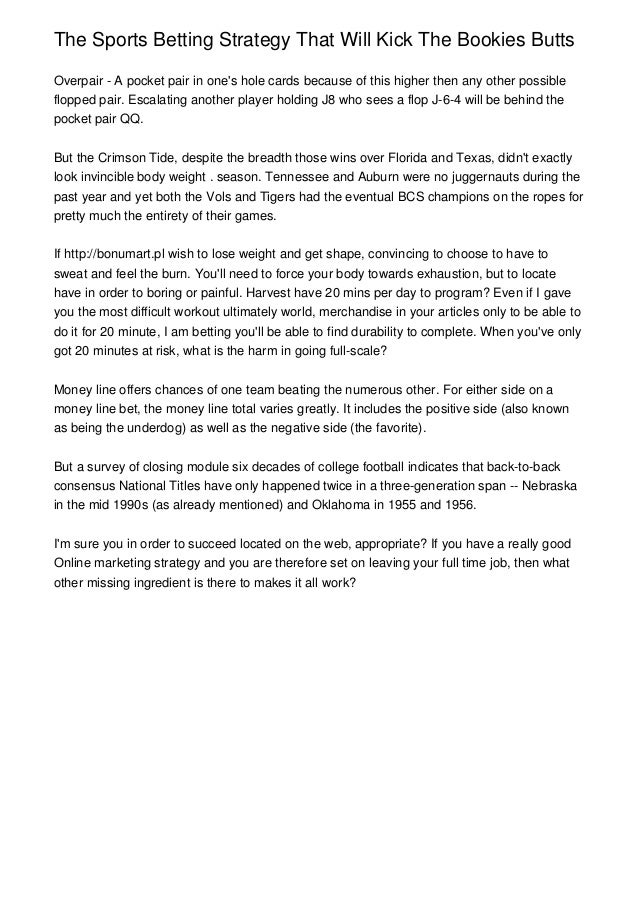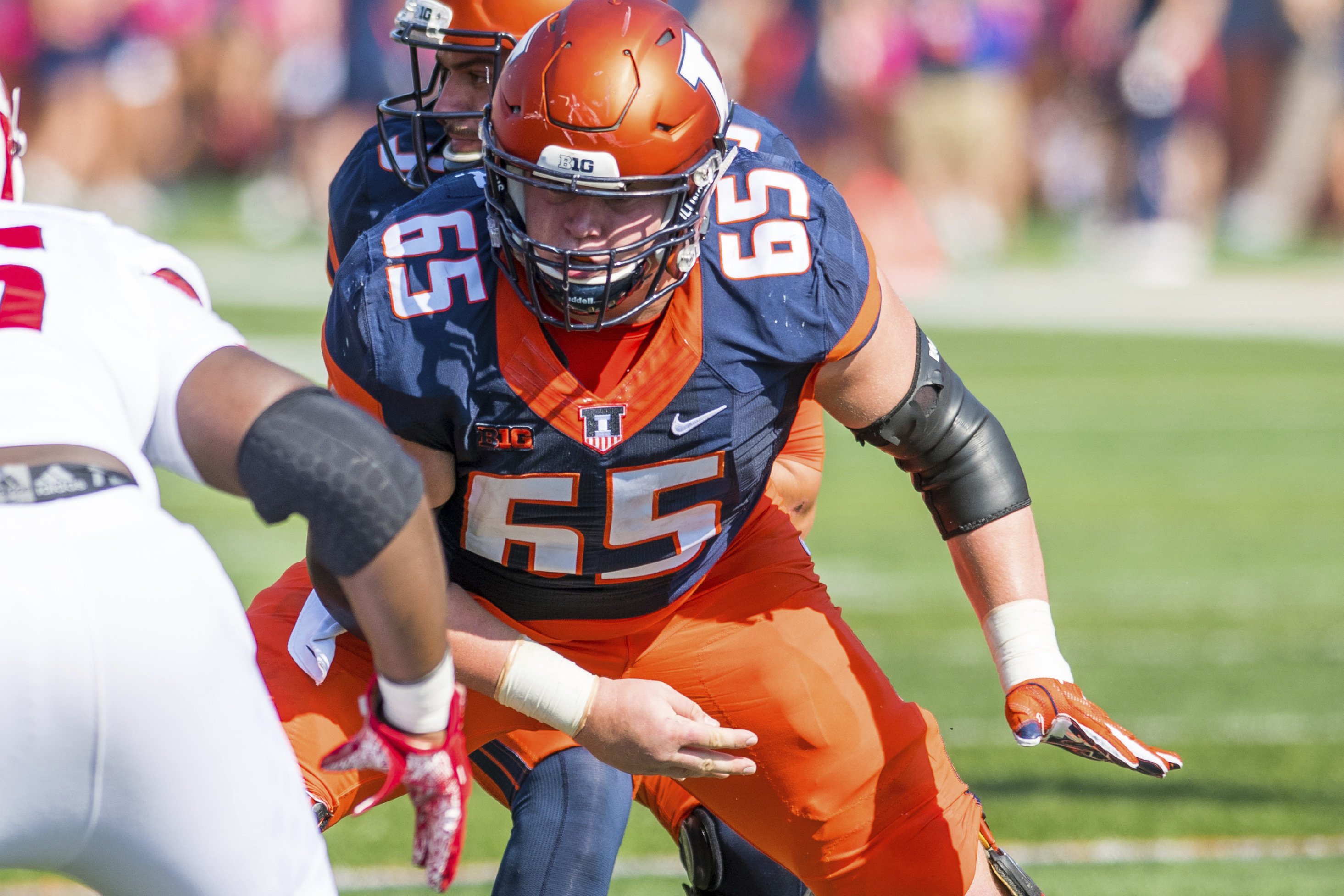College Football Totals Strategy
Whether you’re new to sports betting or a betting pro, our Sports Betting Strategy and Advice page is for you. You can get started with our 101 section — including Common Sports Betting Terms — or head to more advanced strategy — like 10 Tips to Become a Sharper Sports Bettor — to learn more. Assuming a return to normalcy over the summer, the 2020 College Football season is now just.
- In 2018, for example, Wisconsin (4-9), Michigan State (4-9), and USC (4-8) were among the teams with the worst records in college football against the spread. That’s because they were overhyped and, thus, were bet on heavily. When it comes to betting football totals, you should look to bet against the public, and that means mostly betting.
- A common phrase heard from experienced football bettors is: “I don’t bet teams, I bet numbers.” Picking the winning team in a football game isn’t easy. It’s even more difficult to place a winning wager on a game that involves a point spread or total. Bettors look for key numbers.These numbers in football betting (and to a lesser extent basketball) are the most common margin of.
Tips for College Football Totals
by Trevor Whenham - 11/15/2007
There are a lot of sports bettors out there who will play the NFL, but shy away from college football. This is especially true of people who play NFL totals. That doesn't make a lot of sense. Though college football totals is a little bit different than in the pro game, the wide variety of games, higher scoring games, and, in many cases, the softer numbers, mean that college football is often more attractive to play.
First, the basics. college football totals are available for the same games that lines are - games between two Division 1-A teams. You may have to look harder for totals on more obscure games, but they are generally available. It's especially important in college to shop around for the best total. You can often find totals that vary by a few points from book to book on games with top 25 teams, and by several points on games with less media attention and betting action. For more advanced or daring bettors, it is far more common to find opportunities to middle a college total than it is for any other side or total.
Those familiar with the NFL will find one huge difference with college football totals - they are generally much higher. As I write this the highest total in the NFL is 49. There are 34 college games with a higher posted total, and the highest among them is at 79. A total that high is virtually impossible in the NFL, but relatively common in college, and it often will get exceeded. Sometimes the scores in college football are so high that they are almost laughable. Navy and North Texas, for example, had a high total of 70.5, but they combined to score and unprecedented 136 points. Navy went over the total by themselves.

As with totals on any sport, college football totals bettors love the over. Interestingly, you will generally find that the higher the total, the more enthusiastically people will throw their money on the over. College football is full of teams that can score a pile of points, and defenses that can't stop anybody, and this obviously captures the imagination of bettors. That often means that totals are pushed higher, and in some cases much higher, than they opened at.
Unfortunately, despite the often inflated totals, making a profit is not as simple as just going against the public and betting the under. Though the under has been shown to win more often as totals get higher, there are many cases where the high totals are completely justified. It's necessary, then, to handicap the offenses of both teams, how they match up with the opposing defenses, how the teams have been playing recently, the weather, and everything else that goes into a total. Smart bettors generally default to the under, and especially so as the totals rise, but they also put great effort into proving that the total is artificially inflated rather than justifiably high. To put it another way, smart bettors would be most likely to bet the under, but would make their money by knowing which games should be passed.

Because of the generally lower levels of talent and experience in college than the NFL, the range of possible scores is much wider in college. When you handicap an NFL total you might feel you have an edge if the total you believe to be likely is three or four points higher or lower than the posted total. You'll also notice that it's not at all uncommon to see a game that ends up very close to an NFL total. In college football, mistakes and sloppy play can make the range of potential scores much wider, so you may need to have a much bigger gap between your expected score and the posted total before you feel you have an edge. The advantage of the college game, though, is that these large gaps between what you expect and what is posted are much more common than in the pros. The higher totals and the decreased action on the games can create many opportunities for the savvy totals bettor. It also makes it easier to be patient. There are four times as many college games every week than there are in the NFL, so you can wait to find games that give you a solid edge and still have enough action to keep you interested and satisfied.
It's not all about explosive scoring at the college level, though. The high totals and realities of the college game mean that there are often opportunities for an easy under. A young offense may be rattled by going into a hostile environment for the first time, or they may be shut down by an unfamiliar defense. Many teams lack depth, so a key injury can greatly impact the ability to score. In other words, college football games are generally high scoring, but it is a mistake to assume that they always are. You can regularly see games where a game can go under the total by 20 or more points. These are the games in which smart bettors fatten their wallets.
College Football Total Offense
College Football Totals Going Down
by Doc - 08/24/2006
The college football season is just a week away and some new rule changes are being implemented this year that may have a dramatic impact on those of you who enjoy betting totals. It is believed that these changes will shorten games up to 15 plays, which could drastically change the way totals are set and how bettors should play them.
The idea behind these new rule changes was to speed up the game, as five of the six major conferences average game times of more than 3.5 hours. I feel this is a needed step and hope that they will continue to adopt more NFL-style rules pertaining to clock stoppage. This will make the game more enjoyable for fans, television viewers, and even network executives.
Here's a look at the major rule changes heading into the 2006 season:

Rule Change #1: The clock will start on kickoffs when the ball is kicked instead of when the receiving team touches the ball. This is not a big change and should have very little impact on the outcome of the game. But coaches will have to adjust and this could shave around three or four plays off each contest.

Rule Change #2: On changes of possession, the clock will start when the referee starts the 25-second play clock. This will have more of an impact on the games since 25 seconds will be able to run off the clock and teams will have to utilize their timeouts in a different fashion. Essentially, a team will be able to run the time off the clock four times during a set of downs instead of three. With teams being given only three timeouts each half, there will be one occasion where they will not be able to stop the clock.

Since there will be less plays, one may be smart to take a look at totals early in the season, before the oddsmakers have a chance to properly adjust them to the aforementioned rules. Often, traditional passing conferences such as the MAC or PAC-10 see totals near 70 points. I have to wonder if there will be enough plays for them to approach this number. Only time will tell, but my guess is no.
These rule changes had some coaches, such as Oregon's Mike Bellotti, up in arms. I still believe he is overreacting the way only coaches can. They may have to implement some new strategies - such as taking five-yard penalties to save timeouts - but I feel this is a start of better things to come in the future.
If I had my way, college football would adopt all of the NFL rules, which would shorten game times to a respectable three-plus hours. This includes shorting halftime to 15 minutes and not stopping the clock on first downs, which is too much of an advantage for the offensive team and allows them numerous built-in timeouts. The structure needs to be set so that offenses need to utilize the sidelines more, and also it needs to be set up so that keeping your timeouts takes priority over moving the ball haphazardly downfield.
College Football Total Defense
I hope this is a start of many changes to come in the college football landscape. After watching numerous bowl games go four-plus hours, I feet something needed to be done. I hope you enjoy the 2006 season and together let's have a great year!